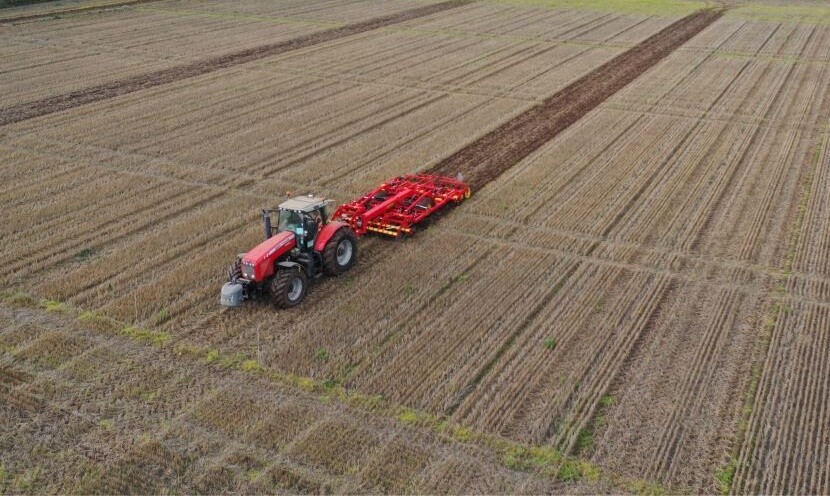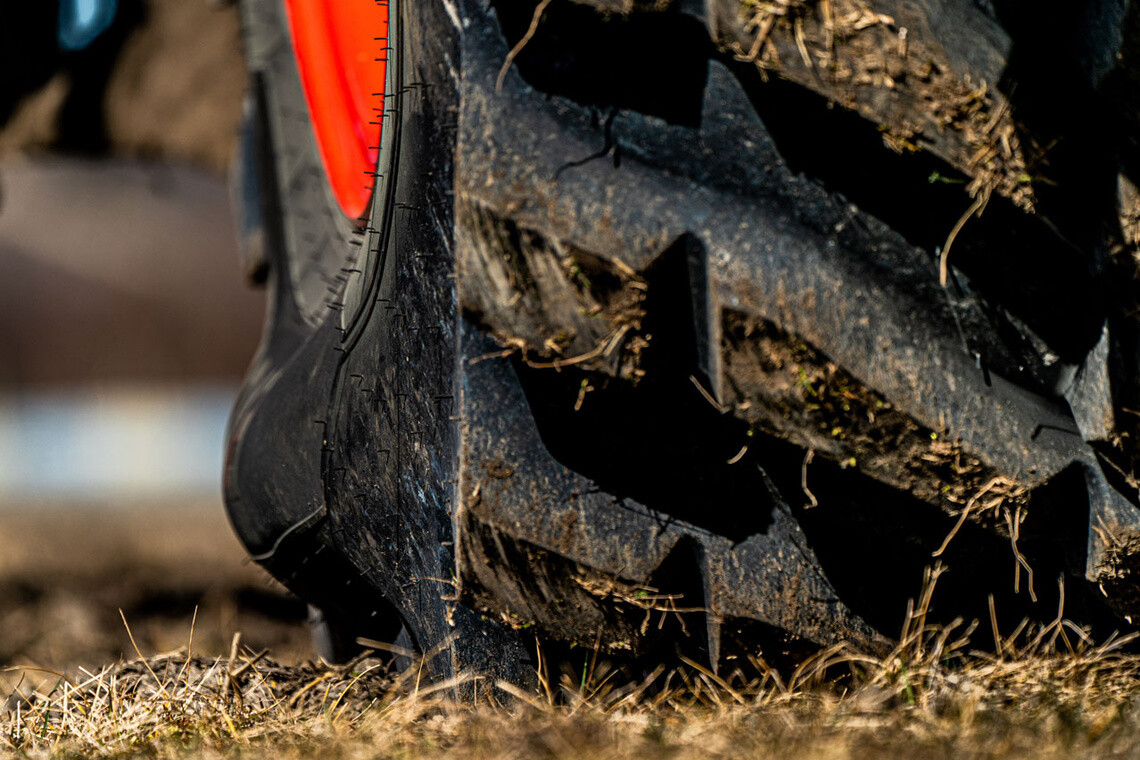
The importance of self cleaning function on tractor tyres
DEMO AGRO ULTRAFLEX
Zoom in on the self cleaning function of farm tyres
SUMMARY:
The importance of self cleaning on tractor tyres
The self-cleaning function of a tractor tyre is crucial both in the field and on the road, for a variety of reasons. Here's why:
In the field
If soil gets stuck in your tyres, it may not offer the same traction.
As a result, your tyre slip rate is likely to increase, leading to a rise in fuel consumption that may have an impact on your costs. On top of that, tyre slippage will cause ruts and soil compaction.

If soil gets stuck in your tractor tyres they are no longer able to offer the same traction
Michelin social media testimonials Visual
On the road
When you drive on the road after leaving the field, the soil that has crept into the tyres must be quickly removed. This is because soil sprayed onto country roads can lead to accidents. In some countries, this could be subject to fines, be sure to check your country's laws and regulations on this subject.
You can give it a little push to quickly evacuate all the soil thanks to centrifugal force. The soil, evacuated over a short distance, will be easier to clean. But your tractor tyres still need to be able to evacuate it properly.
Tyre flexion is key
What facilitates self-cleaning is the tractor tyre's ability to deform as it moves from the ground contact zone to the non-contact zone.
The tyre's tread pattern becomes loaded with soil in the spaces between the lugs, then when this area of the tyre is no longer in contact with the ground, it flexes, ejecting the accumulated soil.
This deformation creates a geometric gap between the deformed and non-deformed parts of the tyre, which facilitates the ejection of the soil.

What facilitates self cleaning is the tractor tyre's ability to flex
This action occurs with each rotation of the tyre, generating continuous self-cleaning while working in the field. This helps to maintain grip by preventing soil build-up, ensuring continue performance from the tyre.
The more the tyre flexes on entering and leaving the contact area, the more it expels soil.
Some tractor tyres on the market are designed with a stack of carcass layers to enable them to support the load. But this stacking makes the tyres stiffer. By flexing less, they deform less and therefore eject less soil when they leave the contact area.
In contrast, our MICHELIN UltraFlex Technology tyres (VF standard) incorporate specific components that enable them to support a high load using fewer carcasses. They flex a lot, which results in great amplitude of deformation that facilitates soil ejection.
The role of the tyre tread pattern
In addition to the flexibility, the design of the tread pattern plays a crucial role in the self-cleaning function of tractor tyres. The better the tyre's design is adapted to this function, with well-designed tread patterns and spaces between the lugs, the more effective the self-cleaning process will be.
Conventional lug or chevron tyres, with large spaces between the lugs, are effective at evacuating soil. They allow the soil to escape laterally and by centrifugal force.
On the other hand, tyres with a more closed tread pattern such as those used on trailers, tend to retain more soil. The small spaces between the blocks allow the soil to accumulate, and there are fewer chances for it to be ejected.

MICHELIN XEOBIB a tread pattern designed for excellent traction and good soil evacuation
The tread pattern on MICHELIN tractor tyres is carefully designed to fulfil a number of functions, such as ensuring adequate traction while minimising slippage and support soil evacuation
Conclusion
To avoid important tyre slippage, fuel consumption and the formation of ruts, the ability of tyres to self-clean is an important factor to consider.
At Michelin, we take soil evacuation into account on all our farm tyre ranges. However, as a tyre's ability to flex is an important parameter for self-cleaning, the right tyres for your needs should be our VF standard tyres (MICHELIN Ultraflex technology).
Find out more about:
Need more advice? Discover our tyre maintenance and caring guide




